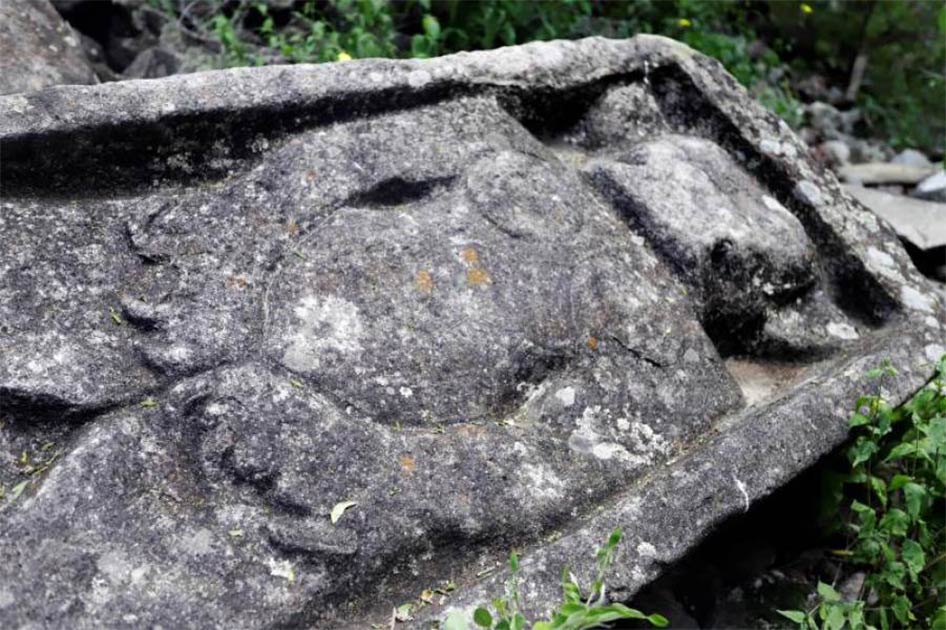Astonishing Zapotec Ruins and Carvings Found in Mexico
An astonishing discovery has been made on top of a mountain in Mexico. Archaeologists and locals have been exploring a site where previously unknown Zapotec ruins and carvings have been found. The Zapotec ruins date back 2500 years and are providing new insight into an important culture in Mesoamerica before the coming of the Conquistadors.
The discovery was made by local people from the village of Santa Cruz Huehuepiaxtla, which is in Puebla state in south-west Mexico. This area of the country is rich in historic ruins and archaeological sites. The finds were made on the summit of Cerro de Peña mountain at a height of 6000 feet (1,828.8 meters). It is reported by Reporter Choice that ‘Access to the site is along a rocky path, which takes two and a half hours to climb’.

It takes two and a half hours to climb up to the Zapotec ruins. (Oro Noticias)
Significant Zapotec Ruins on the Summit
Archaeologists from Mexico's National Institute of Anthropology and History (INAH) were amazed at what they found on the mountain top. José Alfredo Arellanes, who works with the INAH, stated, “Initial investigations suggest a ceremonial area, flanked by temples and the homes of the rulers, would have been located at the top of the mountain.”
The mountain top was home to seven-step pyramids, a public space used as a ceremonial area, and a ball court. Here pelota, a game played with a heavy rubber ball, was played. This game had immense social and even ceremonial significance throughout Mesoamerica. Pelota involved players using their hips to put a ball through a hoop.
So far, investigators at the Zapotec ruins have found two stelae that have panels of engravings, as well as a number of smaller stones with carvings that are all well-preserved. Mr. Arellanes is quoted by the BBC as saying that “87 glyphs, or symbols, have been found so far.” They include depictions of horned figures and animals, including iguanas and eagles. There is also a large female figure, which may possibly be a goddess, that resembles a bat.

Two stelae that have panels of engravings, as well as a number of smaller stones with carvings, have been found at Zapotec ruins. (The Yucatan Times)
The Cloud People
‘Archaeologists think it lay hidden since the 6th Century,’ according to the BBC. The team from INAH are still examining the site and they hypothesize that it was built by the Zapotec culture. The Zapotecs are known as the ‘Cloud People’ because they lived in the highlands of Mexico. Their culture flourished over 2000 years and developed a very sophisticated civilization and distinctive writing system.
The Zapotec people emerged from the Oaxaca Valley and they developed an extensive state that was centered on the city Monte Alban, which is now in ruins. Eventually, the Zapotecs established an Empire. They flourished for many centuries and were even able to beat off repeated Aztec efforts to conquer them.
However, their state eventually did fall to the Spanish, after its population was devasted by plagues brought by the Europeans. In modern Mexico, there are still many communities of Zapotec Indians who are descended from the ‘Cloud People’.
- The Lost Zapotec: Vibrant Mesoamerican Civilization of The Cloud People
- The Zapotecs of Monte Alban - The First Civilization in Western Mexico?
- Mitla Mosaics: A Coded Language May Plaster the Walls of a Zapotec City of the Dead
Carvings to Honor the God of the Underworld
The Zapotecs had a polytheistic religion and worshipped gods associated with farming and animals. Arab News reports that ‘The carvings suggest it may have been dedicated to the god of the underworld’.
The site on top of the mountain was likely an important religious and ceremonial center in the Zapotec state. This ancient religion still plays an important role in modern Zapotec beliefs, as they have merged with Catholic practices.

Archaeologists think the site may have been dedicated to the Zapotec god of the Underworld. (EFE/Hilda Rios)
The BBC reports that ‘locals said they were proud to have led archaeologists to this latest find.’ Investigations are continuing at the site but are slow because of the area’s remoteness and the difficult terrain. More discoveries will probably be made among the Zapotec ruins that will provide more insights into this part of Mexico in the ancient past.
Top image: A monument found among the Zapotec ruins in south-west Mexico. Source: EFE
By Ed Whelan



















